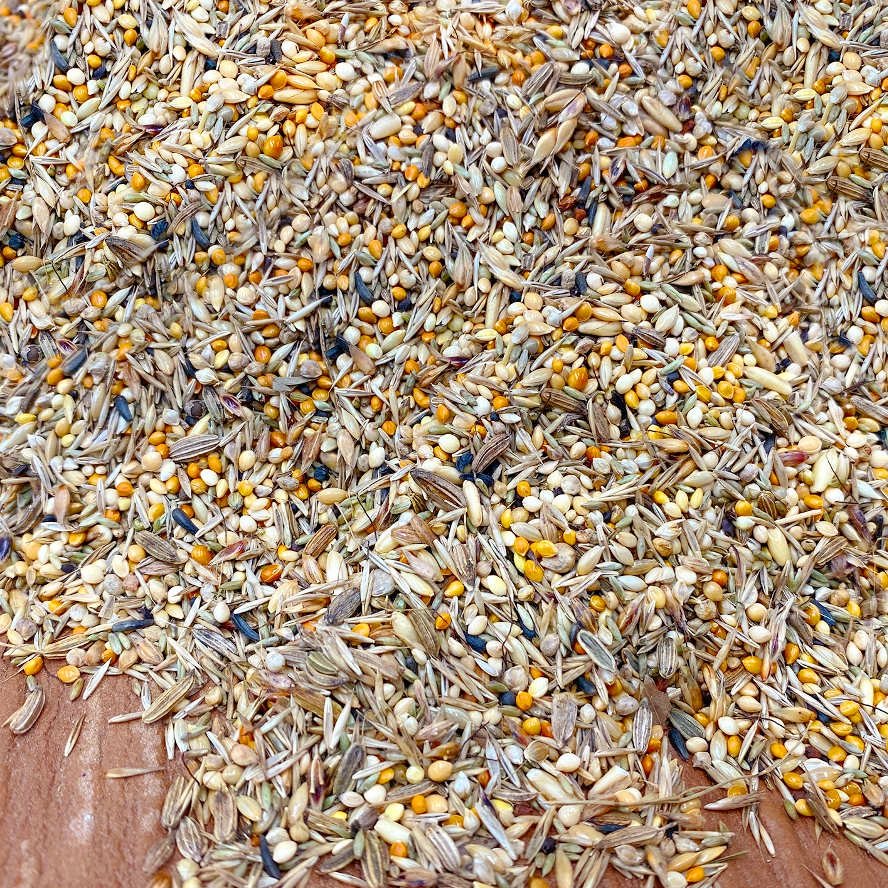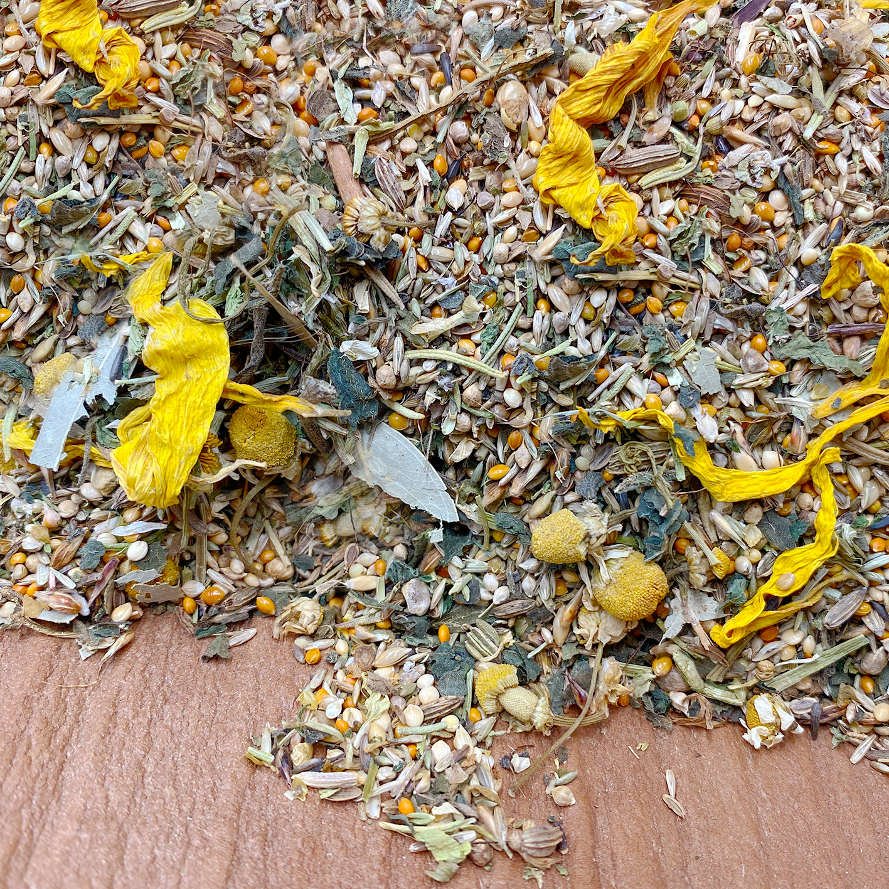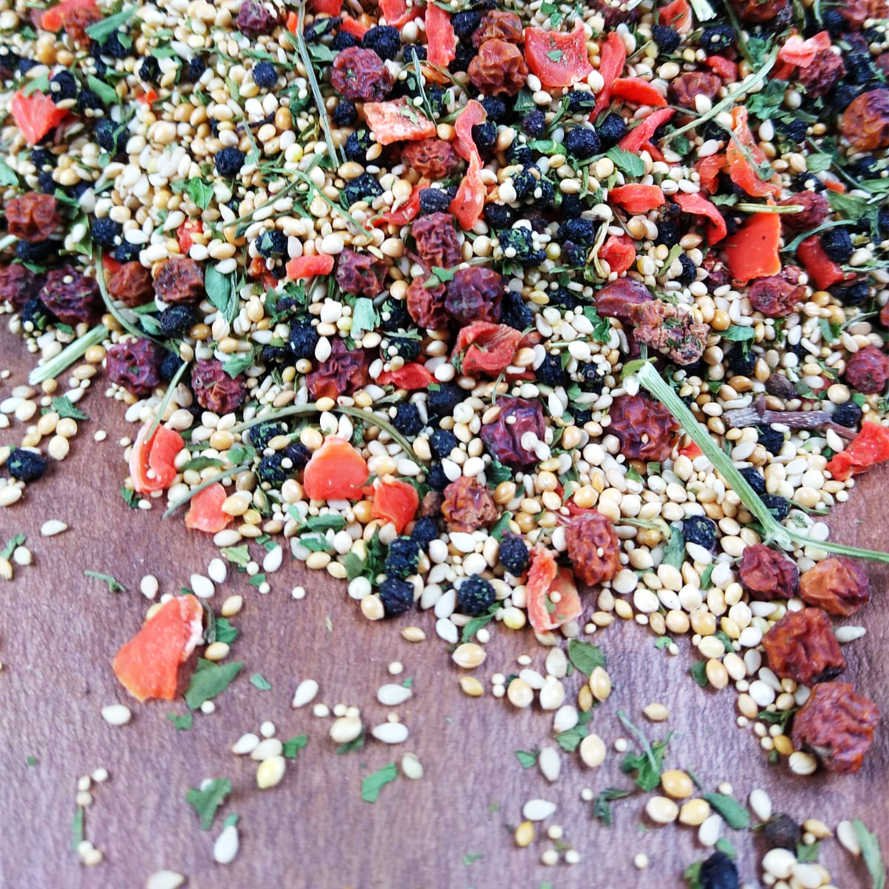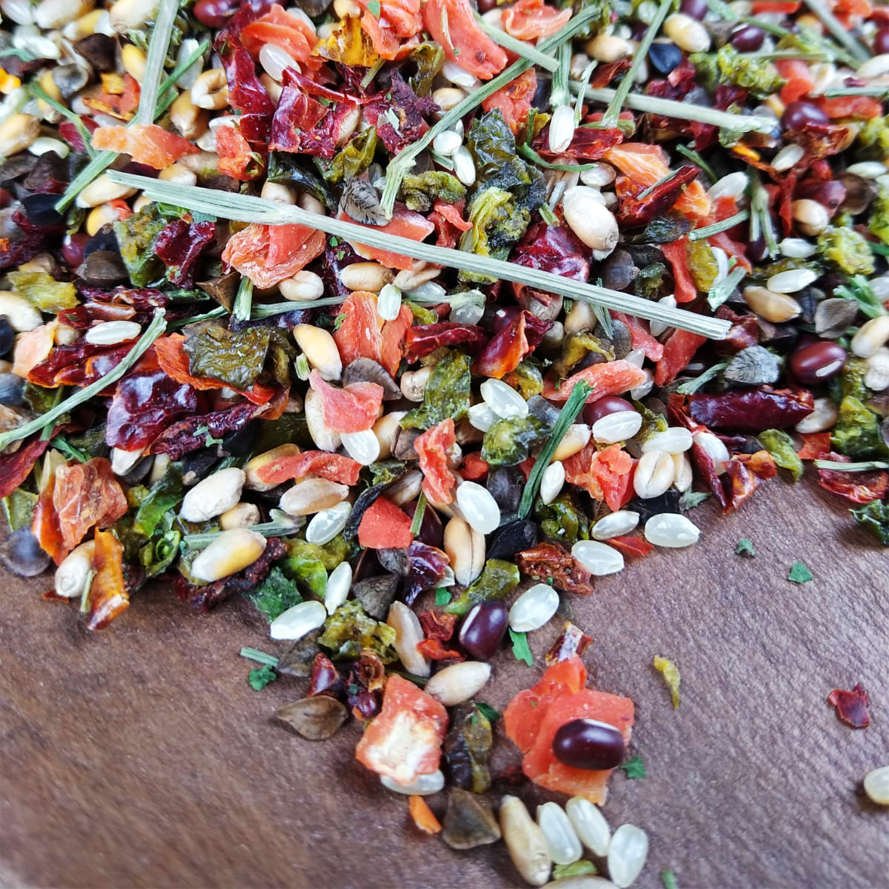
You can buy very good budgie food from us
Welcome to our online store for healthy budgie food! Here you will find healthy budgie food, which is specially adapted to the needs of your feathered friends. Whether seed mixes, dried fruit or herbs - with us you will find everything you need for a species-appropriate and healthy diet for your budgies. Buy healthy budgie food and support the well-being of your feathered darlings!- oriented towards natural nutrition
- low-calorie food with long-term activity
- ideal ratio of meal- and oil-containing seeds
- for outdoor husbandry, rearing of young animals and disease
- easy change of feed due to high millet content
- many herbs, flowers and herb seeds
- o ld recipe Wellensittich Sensitiv Plus
- suitable for macrorhabdiosis and gastrointestinal problems
- s mall seeds for smaller parakeets
- low in fructose
Content: 0.5 kg (€9.00* / 1 kg )
- balanced ratio between fruit and vegetables
- satiating
Content: 0.5 kg (€9.00* / 1 kg )
- Cooked food with vegetables based on wheat & rice
- for large parakeets & parrots
- satiating
Content: 0.5 kg (€9.00* / 1 kg )
- With 9 different flowers from natural medicine
- Flowers can also be used for tea
Content: 0.1 kg (€45.00* / 1 kg )
- improved recipe of grass and flower supplement
- 5 varieties of grass seed and 4 varieties of flowers
Content: 0.5 kg (€19.00* / 1 kg )
- 6 different grass seed varieties with fine herbs
- millet and grain-free
Content: 0.5 kg (€19.00* / 1 kg )
- Improved recipe of the Health Extra
- High-quality herbal seeds known from herbal medicine
Content: 0.5 kg (€20.00* / 1 kg )
- as a food supplement or tea
- suitable for all parakeets and parrots
Content: 0.5 kg (€22.00* / 1 kg )
- ready-to-use sprouted food for budgies
- important nutrients, minerals and vitamins
Content: 0.21 Liter (€21.86* / 1 Liter )
Darüber freut sich dein Liebling...
Woher stammen Wellensittiche?
How to breed budgies ?
What are the types of budgies?
What are typical diseases in the budgie?
We have listed 5 of the most common diseases in budgies.
- Aspergillosis: To make a long story short. There is mold in the lungs! As everyone can imagine, this can not be good! This type of disease quite often leads to the death of the budgie, because the disease is detected late. To recognize a symptom, you have to listen carefully. A small crackle in the breathing could indicate a fungal infection. To get better air, small parakeets hook their beaks in the grate and hyperextend their necks to get better air. If the budgie also starts pumping heavily after free flight, this is also a sign of the disease. Trigger for aspergillosis is often a not species-appropriate attitude.
- Laying deadness: This exists when an egg cannot be laid. Legenot therefore comes without symptoms and warning. Only the eggshell change can be an indication. Wind eggs or eggs with a rough shell would be a sign. One reason for egg laying failure would be a change in the fallopian tube. An infection for example. Especially stressed females, which are too often set to brood, are candidates for egg laying. To prevent it, you can provide budgies with vitamins and minerals such as calcium, vitamin D3 and vitamin A.
- Macrorhabdiosis: This disease is a yeast fungus. In the past, it was assumed to be a bacterial infestation. For this reason, the disease has also become known as megabacteriosis. In English it is called going light syndrome. Briefly explained, the yeast fungus prevents the absorption of nutrients in the intestine. Macrorhabdiosis is hardly recognizable, only a listlessness of the bird indicates it. Only when the parakeet vomits or whole grains are found in the feces, it is clear that megabacteriosis is present. Contrary to many opinions Macrorhabdiose can be treated well. This requires a quick action of the owner in case of infestation. Seek an avian veterinarian who can prevent death. We have also adapted to this disease with a low-sugar feed mixture. It contains a lot of grass seeds and is easy on the intestinal tract.
- Mites: They come in the form of burrowing mites or scabies mites. Mites are probably the most common disease caused by parasites in budgies. They are very small and therefore very difficult to detect. If there is no treatment of the parasites, this is unfortunately to the chagrin of the budgies. In bad cases it came to amputations of the beak, without which the bird must be euthanized. From self-initiative with sprays from the trade we advise against. It leads to nothing and causes only further suffering to the parakeet. A selective fight on the bird makes little sense, a whole-body therapy can only be carried out by a veterinarian who knows birds.
- Tumors: are divided into benign and malignant versions. Fat tumors, for example, belong to the good ones. Lipomas can often be prevented by feeding appropriate to the species and plenty of exercise. The malignant tumors, unfortunately, can affect many organs: Liver, kidneys, spleen and testicles, to name a few. Tumors can be operated in budgies extremely rarely. Unfortunately, often the only option in the end is to euthanize the bird to spare it an agonizing death.
















